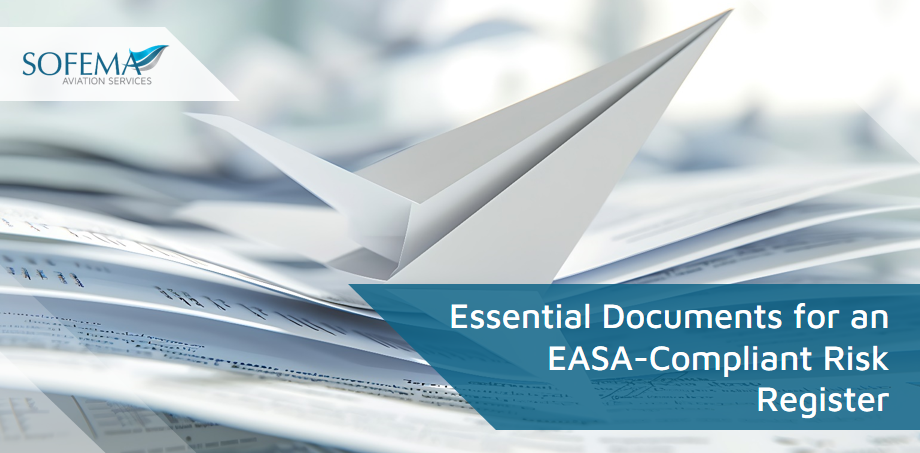Sofema Aviation Services (SAS) www.sassofia.com considers key aspects related to the development of an EASA-compliant Risk Register and Safety Management System (SMS) Hazard Log
Introduction
It is important to secure top management buy-in and clear communication about SMS benefits. Moreover, to create a safety culture where reporting hazards is encouraged and not penalized.
Train staff on how to identify, report, and evaluate hazards.
Ensure all personnel understand the purpose of the hazard log and risk register.
EASA Documents
- Regulation (EU) No 2018/1139 (Basic Regulation): Provides the foundation for the regulatory framework.*
- Regulation (EU) No 965/2012 (Air OPS): Focuses on operations, particularly Annex III (Part ORO) and Annex IV (Part CAT).*
- Regulation (EU) 1321/2014 (Continuing Airworthiness) – Part 145 & Part CAMO*
- Regulation (EU) 748/2012 (Initial Airworthiness) – Part 21*
- Regulation (EU) 139/2014 (Aerodrome)*
* Plus, Associated AMC & Guidance Material
ICAO Documents:
- Annex 19 – Safety Management: Offers high-level SMS requirements and guidance.
Doc 9859 – Safety Management Manual (SMM): Provides more detailed implementation guidance. (including the development of risk registers and matrices.)
FAA Advisory Circulars (AC 120-92B – Safety Management Systems for Aviation Service Providers):
- Provides a framework for safety management that aligns with international standards.
ISO 31000 is an international standard for risk management, offering principles, guidelines, and best practices to help organizations effectively manage risks.
- ISO 31000 provides a framework that organizations can use to support the development of a risk management structure integrated with oversight and strategic planning.
ECAST Guidance on Hazards Identification
- Including specific steps for hazard identification, risk assessment, and control measures. The guidelines ensure compliance and promote best practices when developing a risk register.
- Hazard Identification: Utilize structured methodologies like process mapping or historical data review.
- Risk Assessment: Implement a matrix scoring system that considers severity and probability.
- Mitigation Strategies: Define control measures that align with risk levels.
Historical Safety Data and Industry Reports:
- Accident investigation reports from the European Union Aviation Safety Agency (EASA), International Civil Aviation Organization (ICAO), or national aviation authorities.
- Industry risk reports from organizations like IATA or the Flight Safety Foundation.
Considering Challenges & Best Practices
- Change Management issues, especially if safety culture is not well-established.
- Resistance to additional paperwork and perceived bureaucratic requirements.
- Handling large amounts of safety data can be overwhelming.
- Training costs and time are often underestimated.
- Maintaining proactive hazard identification as operations change over time.
Next Steps
Follow this link to our Library to find & download related documents for Free.
Sofema Aviation Services (SAS) and Sofema Online (SOL) provide Safety and Risk Management Training as Classroom, Webinar & Online. For further information, please see the websites or email team@sassofia.com.
Tags:
Safety Culture, FAA Advisory, Aviation Compliance, Risk Mitigation, SAS blogs, EASA compliance, ICAO Standards, Risk Register, SMS, Regulatory Compliance, aviation safety, Hazard Identification, Safety Training, Airworthiness, Safety Management, Sofema Aviation Services, Safety Management System, Risk Management, Aviation Training




